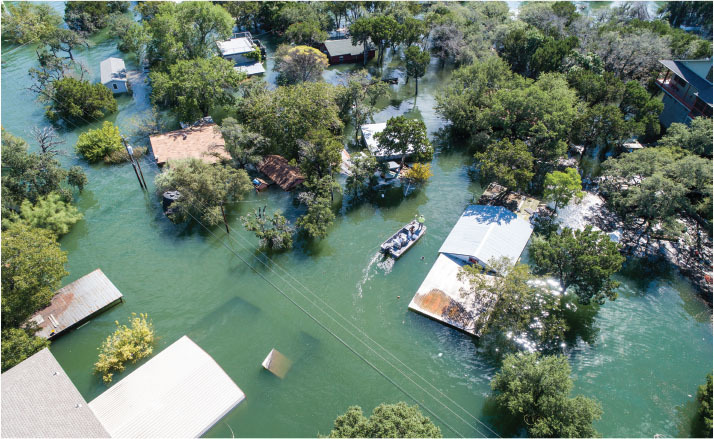November/December 2017
Concepts
Aiding and Abetting the Unlicensed Practice of Engineering
BY JOHN F. HENEAGE, P.E.
 As a country, we seem to learn only from our mistakes, and often bitter lessons learned are soon forgotten or ignored and need painful relearning. When disasters occur, we revise codes and standards, and we pass laws, all to prevent similar occurrences. Unfortunately, humans can be incompetent, arrogant, and greedy. Some feel they are above the law or lack what we call “common sense.” This story reads like a Greek tragedy; to the nuclear industry it is.
As a country, we seem to learn only from our mistakes, and often bitter lessons learned are soon forgotten or ignored and need painful relearning. When disasters occur, we revise codes and standards, and we pass laws, all to prevent similar occurrences. Unfortunately, humans can be incompetent, arrogant, and greedy. Some feel they are above the law or lack what we call “common sense.” This story reads like a Greek tragedy; to the nuclear industry it is.
The Post and Courier newspaper in Charleston, South Carolina, recently published stories and documents revealing that the once reliable and now bankrupt Westinghouse Electric Co. elected to use unlicensed and unqualified individuals to design the new AP-1000 reactors. The expected and resultant design flaws using this approach were well documented. This appears to be a contributing factor in Westinghouse’s bankruptcy.
A study by Bechtel Corp. on the status of the V.C. Summer nuclear project in South Carolina released by South Carolina’s governor revealed that the construction drawings were of such poor quality that hundreds of field changes were required each month. Bechtel’s opinion was that the drawing quality was such that the reactors were not constructible. In fact, the book Managing Gigaprojects notes ten root causes for nuclear project failures; the Bechtel report identified nine of these root causes on the AP-1000 V.C. Summer projects. Careful, detailed, and adequately reviewed design documentation is key to the success of a gigaproject such as the AP-1000, but for some inexplicable reason those factors did not occur in this case.
Imagine arguing that the public health, safety, and economic welfare were not important—that anyone could design the AP-1000 nuclear reactors and situate them 25 miles from a state capital. Many experienced PEs who have prepared design documents instinctively know the importance of proper design document preparation and review. And many have experienced the frustration of design errors identified during construction. The apparent project management violations are so egregious that federal and state governments have initiated criminal investigations.
With the prospects for a nuclear renaissance depending on the skillful execution of these new projects, what was management thinking? Even though Westinghouse had no experience in the engineering, procurement, and construction for an entire plant, it took EPC responsibility of the AP-1000 reactor projects. The Post and Courier noted that Westinghouse was warned, in an internal white paper, not to bypass the role of professional engineers—but they did anyway. To bypass PE involvement, it appears that Westinghouse relied on an internal legal interpretation. The company’s legal counsel prepared an opinion, not reviewed by the Nuclear Regulatory Commission or outside independent legal counsel, arguing nuclear power plants were regulated by the NRC, and state engineering laws didn’t apply. The NRC does not share this opinion and has stated that they expect licensees to comply with all applicable state laws, but in this case the NRC apparently did not intervene.
The stated basis for licensing engineers is to protect the public health, safety, and welfare. In actuality, engineers and other professionals are licensed to manage risk. Bondholders for large projects expect licensed professionals to design and oversee these projects. Without these assurances, financing would be difficult and accountability unknown.
After the space shuttle Challenger accident, many state engineering laws were changed to required PEs to notify higher authority if their judgment was overruled by lay management. However, engineering requirements for a nuclear project appear to fall into a regulatory void. Regulatory oversight is shared by the federal NRC and the states. The NRC’s regulations primarily apply to plant license holders (utilities) and do not provide specific requirements for designers and constructors.
The professional engineering community and the PEs working for Westinghouse and its subcontractors were put in an untenable position by management. If they spoke up against the use of nonsealed drawings and calculations, they were threatened with termination. They had no higher authority to turn to because the project was being executed from multiple locations: Pennsylvania, North Carolina, South Carolina, Georgia, and overseas. At Toshiba, the overseas conglomerate that owns Westinghouse, no one was directly in control. This is another example where authority divided between the federal NRC and states left PEs unable to fulfill their legal responsibilities.
Some might argue nuclear plants are different. They are not. Appropriate federal laws will need to be strengthened to prevent this from reoccurring.
In the end, the nuclear industry will benefit from the quality work PEs bring to any project. For the present, with the V.C. Summer project terminated and thousands laid off, South Carolina ratepayers are on the hook for the billions of dollars apparently wasted. Regulators have yet to act. Amazingly, the South Carolina law that allows ratepayers to be charged for the construction as it occurred requires that expenditures be “prudent.” It is hard to argue that eliminating professional engineering involvement and violating state law was anywhere close to prudent.
NSPE member John F. Heneage, P.E., is an independent consulting electrical and nuclear engineer. He has provided engineering and licensing support to both domestic and overseas nuclear and fossil-fuel projects including the Westinghouse AP-1000.


 Volunteering at NSPE is a great opportunity to grow your professional network and connect with other leaders in the field.
Volunteering at NSPE is a great opportunity to grow your professional network and connect with other leaders in the field. The National Society of Professional Engineers (NSPE) encourages you to explore the resources to cast your vote on election day:
The National Society of Professional Engineers (NSPE) encourages you to explore the resources to cast your vote on election day:



